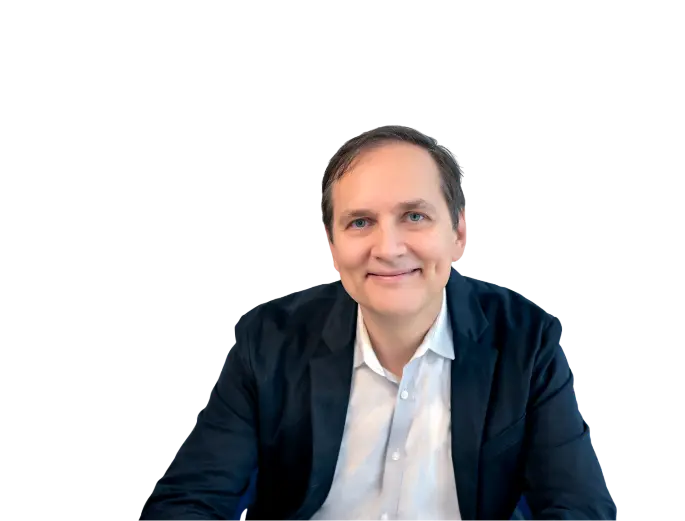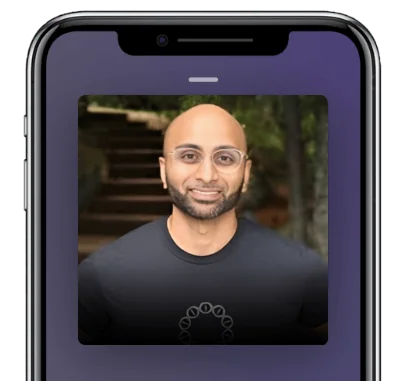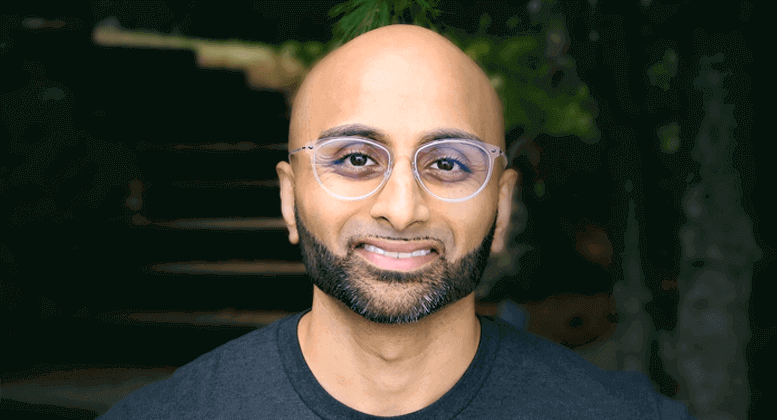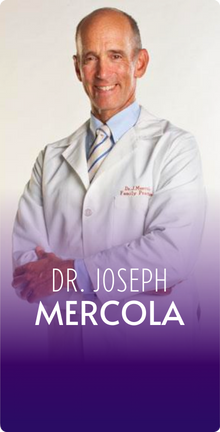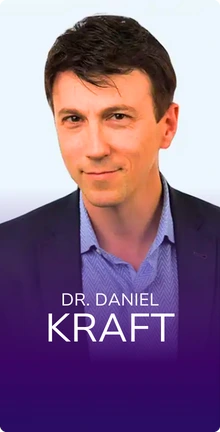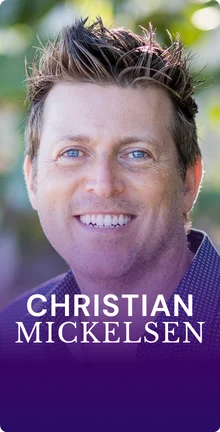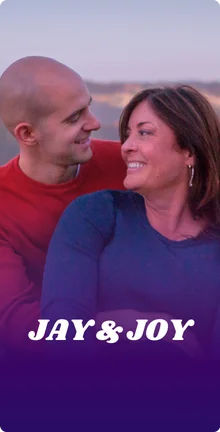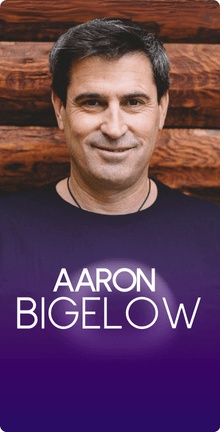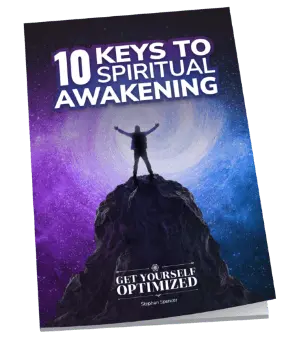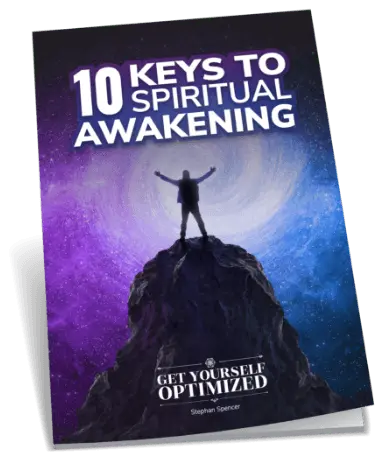In this Episode
- [00:39]Stephan introduces Sachin Patel, a functional medicine practice success coach, speaker, and author. He has a powerful philosophy, “the doctor of the future is the patient.”
- [05:16]Sachin explains why eating less and reducing calories is one of the top three ways of doing self-care.
- [10:50]Stephan asks Sachin an example of how they are going to help a person address their high blood sugar level, stress, and anxiety.
- [15:53]Sachin explains why he recommends a continuous glucose monitor for you to be in full control by knowing what activities are impacting your blood sugar.
- [20:18]How can genetic testing help identify a human being’s strengths and potential threats?
- [25:58]What is equanimity? What are the ways you can rewire and reprogram your subconscious mind?
- [32:03]Sachin talks about the Oura Ring as a tool to use in knowing when to push yourself when to rest, and make better decisions for your body.
- [38:58]Sachin simply describes what functional medicine means and its type of approach to an individual.
- [43:21]Stephan explains the multiple reasons why you should avoid lots of electronics at night, specifically in the bedroom.
- [48:53]Visit the website 30in30.org to check out Sachin Patel’s 30 Ways in 30 Days to transform your life in 30 days and live out your best life possible.
Sachin, it’s so great to have you on the show.
Thank you, my friend. It’s great to be here and such an honor to spend this time with you.
First of all, let’s talk about the elephant in the room, the Coronavirus, the pandemic, and what folks need to know and need to take action to keep themselves and their families safe.
This is an opportunity for us to focus on our self-care and self-love, which is the best way forward for each one of us.
Great question. And I know this is something that’s on a lot of people’s minds. And it’s so hard to get a straight answer from anybody because it seems like the dialogue or the instruction set, everything keeps changing. We’re getting new, better or worse information each day, and it depends on what side of the equation you’re on. But I would say that the best thing that we can always do is take good care of ourselves from my personal experience. And regardless of what your beliefs are around everything that’s going on, I believe that a resilient nervous system is the best tool that we have to create resistance from anything. And it’s not just Corona. There’s a lot of other things that are going on in the world around us as well. This isn’t the only thing that can negatively impact us. So I feel that right now, there’s a great opportunity while people are at home while they’re grounded a little bit for them to lean into their own personal and self-mastery. So that’s what we’ve been telling our clients to do, and that’s what I would encourage each one of us to do, is to figure out what are the things that you can lean into a little bit that maybe you’re putting off because you didn’t have the time, maybe you can be a little bit more intentional with the things you’re doing. And certainly, we can talk about specifics, but as a 30,000-foot view, I feel like this is an opportunity for us to focus on our self-care and self-love, which is the best way forward for each one of us.
So give me an example of something that you’ve done to lean into your self-care.
Well, there are three things that we encourage everyone to do. These are the three things that you can learn from your children as the fastest modalities for healing. The first one is to sleep, and people do not sleep enough. Before they invented the light bulb, the average person used to sleep about 10 hours a night. In some cultures, there’s no word for insomnia, like not sleeping through the night or having disrupted sleep is not even in the vocabulary in some cultures whereas in North America, in developing countries, in developed countries, it’s a big problem. So the average person gets way less sleep because they’re overstimulated, they’re in artificially lit environments way too long. And unfortunately, that has a negative impact on our health. So I think that leaning into sleeping, which is essentially doing nothing, it’s one of the hardest things for people to do. Go to bed early, and get the rest that their body needs because we’re conditioned to think that we’ve got to go, go, go all the time.
A resilient nervous system is the best tool we have to create an immune resistance to anything. And it's not just Coronavirus. Share on XThe second thing that we’re leaning into is silence. Being more reflective, being silent, visualizing your thoughts, and sitting with them but being silent. And I also believe that this is a great time for us to listen to our bodies, it’s a great time to listen to Mother Earth, it’s a great time to listen to our communities. And if we can listen more than we speak, I think that helps create the world that we want. And then the last thing that is helpful is to stop eating so much. So it’s easier for us to eat now than ever before, right? Many people used to be distracted, or they’d be busy working, that they wouldn’t have time to eat, and now some people might be leaning into food as a source for their cravings, mood imbalances, and things like that. So if we can get ourselves to eat less, virtually all studies have shown that the less you eat, the longer you live, and it’s one of the secrets of longevity is calorie reduction. And what we focus on is having our clients eat in a narrower feeding window. So instead of eating throughout the day, you can pack those same number of calories into a tighter feeding window. So maybe that’s seven to eight hours for the average person. And of course, these are general guidelines and recommendations, but those are three things that people can do. To sleep more, stop talking, listen more, and then the last thing is to eat less.
And so intermittent fasting, is that the same thing as what you’re describing, this seven or eight-hour window of eating and then fasting the rest of the time?
Yeah, pretty much so you would drink water liquids. You could have coffee or tea if you wanted to. But basically, you’re not putting anything else into your body besides clean liquids, and you’re eating in those 7-8 hour windows. So for some people might be considered intermittent fasting is another nomenclature for it.
This is a great time for us to listen to our bodies, to Mother Earth, and to our communities.
Got it. Now, my understanding of intermittent fasting is that it doesn’t work for everybody. Your genetics determines in large degrees how successful you can be at shutting the excess fat, and especially the visceral fat in the middle depends in large part on your genetics. So if you are from a Northern climate, let’s say that you’ve got Nordic ancestry, intermittent fasting is amazing. But if you’re from, let’s say the equatorial area, not so much. So that’s one thing I’m curious if you’ve heard the same thing or if it’s been successful across all of your clients regardless of their heritage?
That’s a great question because part of it too is going to be genetic. And that’s something that we encourage our clients to have done is a genetic assessment so that we can identify metabolically, what’s going to be ultimately the best decision for them. As a general rule of thumb, calorie restriction is still a good and solid recommendation across the board for most people. The timing of their meals depends on how balanced their blood sugar, what are their physical demands on their body, and then, of course, genetics. And it would make sense because if you’re living in colder climates in the winter, you’re not going to have food year-round. Whereas if you’re living in an equatorial environment, then the climate, the food availability, those types of things are going to be very different. So people from northern climates, it would make sense for them to be better adapted for calorie restriction.
Yeah. And another thing I learned about intermittent fasting, I forget from which health expert it was, but that in times of stress, intermittent fasting is not a great kind of panacea than it normally would be.
Sleep more, stop talking, listen more, and eat less.
Yeah, so if you think about it as a bear, let’s think about a bear hibernating in nature. It’s hibernating. So if we starve ourselves and put ourselves under stress, then we’ve become hypercatabolic, so we want to be mindful of that. And that’s where we develop resilience in our nervous system and learning how to have equanimity, how to not get overly stressed, and be very mindful of the inputs into our body is very important. So it’s never just one thing, everything’s connected. It’s kind of like that. String, you pull it, and it unravels everything, there’s a golden thread, which is, every solution is going to require some level of personalization, for it to be optimized for us individually. And I think the person listening to this is not your average person, and they’re probably seeking to go a few steps further. So if you have the resources, then getting the right testing and working with somebody that can help you identify these little nuances can give you that edge. Because if somebody can give me 5% more energy or 5% more efficiency in my health, then definitely I’d be excited about that if it was an investment, but certainly, if it’s my health, I’m going to be excited about that. But many times, you can get 20%-40% increases in efficiency, and get better results by doing less. I think that’s the ultimate holy grail is how we can do less and get more, and the way to do that is to have better self-awareness. So getting the right testing done, whether it’s genetic testing or microbiome testing, or taking a deeper look at your mitochondrial chemistry. Those types of tests can help us dive deeper and create even more detailed recommendations for our client.
Gotcha. It reminds me of a saying. That doing things right is one thing, but doing the right things is where all the juices are. Now I butchered the expression or whatever it was. But so you could be very efficient, but if you’re working on the wrong things, then you’re just kind of wasting your time, and you’re not adding so much value into the world at the same time.
It’s all about those efficiencies, right? Finding what those leavers are, they can open big doors for us, and it could be different things for different people. Some people do well with intermittent fasting; some people kind of crash and burn. And it depends on, of course, we talked about this; their genetics, it also depends on their current state of health, as well. So if somebody’s blood sugars are kind of all over their place or their stresses all over their place, emotional demands on them might be high, then there might be other fires that they need to put out first, before some of these strategies are going to make more sense for them. Maybe they need to focus on sleep more.

Yeah, so let’s go through what that hypothetical person who’s got a high blood sugar level, they’re under a lot of stress, anxiety. That is probably something that’s going to need to be addressed pretty quickly. Let’s say that their blood sugar level is getting up into the four hundred, what do you do to address that? Because it’s got to be done pretty quickly, right?
Absolutely. Diet, nutrition, certainly plays a big role. So those are going to be some low hanging fruit for individuals. Looking at their meal timing, looking at what is going into their body can be a way to bring those blood sugar levels down. The timing of their meals can help give them a little bit more balance and consistency in their blood sugar. But one of the main things that we want to do with, specifically using blood sugar as an example, is we want to bring their cortisol levels down because one of the main functions of cortisol is to elevate blood sugar. Anything that creates stress in our body, anything that creates some kind of low grade or chronic inflammation in our body, is going to elevate our cortisol, and that’s going to increase our blood sugar. We found that just like somebody who can become insulin resistant, and then later become diabetic, and many people become cortisol resistant. So, their bodies have to make more cortisol to get the same response from the cell. Just like if they’re insulin resistant, they have to create more insulin to create the same response at the cell level. And this can cause people to dump tons and tons of cortisol into their system. So if somebody is doing the dietary guidelines, they’re following everything to a tee, they’re on a ketogenic diet or let’s say a low carbohydrate diet and their blood sugar is still kind of all over the place, then we oftentimes will start looking, what are the stressors? What are some of the underlying mechanisms? Or what systems are not working optimally so that we can start rebalancing them?
And one interesting fun fact I learned from my mentor Barbara Kowalski, is that when you make melatonin, for example, it decreases the production of cortisol. So they kind of act against one another in the sense that if melatonin increases, so if we increase our exposure to darkness, for example, then it will decrease our cortisol production. So many times, we can therapeutically dose people with melatonin, which then allows their cortisol receptor to become more sensitive. They’re not dumping out as much cortisol, and guess what their blood sugar starts balancing itself because we’re kind of unraveling this cortisol resistance that people have. So somebody whose blood sugar is that high, we want to bring it down as quickly as possible. And then we want to put in tactical, short-term, and long-term strategies to bring those levels down. So, longer-term strategies would be looking at their gut microbiome, looking for stealth infections, looking for things that are going to keep the inflammation and cortisol levels in their body chronically elevated. And then, of course, you want to address the emotional challenges that some people might have. These are stressful times, and unprecedented times are like our parents couldn’t prepare us for this, our grandparents couldn’t prepare us for this or a school system or employers like nothing prepared us for anything that we’re being exposed to right now. Not just like, warfare on our health, so to speak, but there’s the psychological aspect of what people are trying to process right now. And then the financial constraints that are being created.
The ultimate holy grail is how we can do less and get more, and the way to do that is to have better self-awareness.
So it’s hard to know what dialogue people are having, but that dialogue could be creating more anxiety and stress for them certainly. So, helping people deal with the mental and emotional challenges of what we’re going through can also help bring their blood sugar down. An interesting fun fact is that one of the key tools that we use, and it’s not as widely available in the US without a prescription, but in Canada, we can get it over the counter, is a continuous glucose monitor. A continuous glucose monitor is checking your blood sugar every 15 minutes, and it’s pairing and syncing up with your phone. So we can see throughout the day, what’s happening to your blood sugar so we can see what answer your email does to your blood sugar, we can see what going for a walk does to your blood sugar, we can see what that meal does to your blood sugar, and we can see it in increments that allow us to make more and better-informed decisions. I had a client, actually a mutual friend of ours. I won’t mention the name for privacy reasons, but her father was a diabetic. And she tried so hard, loves him so much, wants to do whatever she can to help him and support him. She is surrounded and knows some amazing people who can help her father, but he’s so stubborn. So she ordered the continuous glucose monitor from us. And within one week, five days, actually Monday to Friday, within five days, his blood sugar was normal, just because we were able to gamify the process. And he had tried all kinds of different medications, all kinds of different things, but having that instantaneous feedback for him, was the most helpful thing ever. Because he could see in real-time the implications of every decision that he made on his blood sugar, and then he could decide. Hey, do I want to get into this conversation, or do I want to change this behavior? So depending on the individual, gamification can also make a big difference.
So what’s a way to gamify that data on? Let’s say your blood glucose level, and you are on a conference call with a client, and it’s spiking. So I don’t see the game in that way, other than avoid talking to clients.
Well, awareness is part of the game. It is kind of understanding those hidden triggers, that’s where a lot of people get stuck. Because if they measure their blood sugar once in the morning, maybe a couple of times throughout the day, it’s kind of like taking a snapshot three different times a day with the look on your face and imagining what the rest of your day was like, it’s impossible, right? The day is gonna have different emotions, and there’s gonna be different challenges and different ups and different downs. And so having that information in real-time allows us to paint a more accurate picture of what is impacting your blood sugar. And so if somebody knows their blood sugar is up, and they also know that I can go for a 15-minute walk and it’ll bring it back down, and it’s painless for them to learn that information. But they can see how in full control they are, and then they can make better decisions throughout the day. And so for some people, it might be that, if every time you get on a call with this particular client, your blood sugar goes up, well, that client is killing you, that client is having a negative impact on your health. And you can see that because they’re raising your stress levels or putting your body in a state that is moving it away from health.
There's no word for insomnia in some cultures, whereas in North America, in developing and developed countries, it's a big problem. Share on XAnd one of my rules of thumb with my clients is that I like to feel better after talking to somebody, not worse. And so if I feel worse after I speak to somebody, then I don’t want to engage with that person as a client, because I know that every time I see their name on the calendar, I’m going to dread being on a call with them, I’m going to feel worse afterward. I may never be able to make this person happy, and it’s just this downward spiral that we go into. So this happened to me, I work on a continuous glucose monitor, I remember getting on a sales call with somebody and I could see my blood sugar starting to increase. And it was quite interesting because you could see it in real-time, you could see it happening, and it allows you to become a lot more in tune with your body and have that awareness. I wasn’t eating any food, it was after lunch, so I wasn’t eating any food. So it wasn’t that, and you could see as soon as it got on the call, and during moments of the call, it was starting to spike.
So you’re wearing the glucose monitor right now?
No, not right now.
Okay, but normally you wear it?
Helping people deal with the mental and emotional challenges of what we’re going through can also help bring their blood sugar down.
Yes. Normally, I wear it to use it for myself, and I don’t have any blood sugar challenges. So I always try things before I recommend them to people. A lot of our clients are diabetic or have metabolic challenges. And one of the first things we do, you can wear this monitor for two weeks straight before we have to replace the tab. So we’ll have clients wear it a week before they start working with us. And we’ll collect that data and then we’ll collect the second half of the data, which is the second week, which is the first week they start working with us. So they have a contrast of, “Hey, this is what I was like when I was working on my own. And this is what it’s like when I’m working with the team.” If you can balance somebody’s blood sugar, that’s probably one of the greatest gifts that you can give to that person, and they’re going to have much clearer thinking, they’re going to have better metabolism. All the health markers that they want to improve are going to start to improve if we balance blood sugar. And blood sugar is essentially the dance between cortisol and insulin. And so, if insulin becomes dysregulated, then there’s a whole set of events that take place, a whole set of dominoes that fall when insulin becomes problematic for people.
And it’s become kind of epidemic in proportions having so many people with diabetes, and it’s a lot of it has to do with the food that we eat and the bad habits but also the environment that we’re in and toxicity. For example, which toxins are causing me some sort of long-term health impact? Is the roundup that’s in everything, like even raining from the sky? Is that something that’s negatively impacting my health? Or who knows what, chemtrails, the exhaust of the cars going down the street, like I don’t know what is doing the damage and what’s kind of a red herring, or is it kind of bouncing off me without affecting me?
Well, each person is unique and different. And I know we touched on this a little bit earlier. But genetic testing can help us identify where your strengths are and where your potential threats may be, so to speak. So in an ideal world, if we didn’t have stress, if we didn’t have toxicity, I think our genetics would be less of a conversation but let’s just assume for a moment that you and I are exposed to the same environment, but I’m better at detoxing things out of my system than you are, then you’re more susceptible in the same environment. And knowing that about ourselves can help us identify where the potential areas of problem are for each of us individually. Some people are going to be excellent at detoxifying, so you put a toxin into their body, and it’s going to have less of an impact. Some people are better or better at handling stress. So you and I, for example, could be exposed, let’s just assume to the same level of emotional stress takes place when we’re exposed to something, based on my nutrient status and based on your genetic enzymes, you’re going to be able to either metabolize those enzymes or those neurotransmitters faster or slower, so it could take you longer to de-stress, or it could take me longer to de-stress under the same circumstance based on our genetics, but also based on our nutrient status.
A whole set of dominoes fall when insulin becomes problematic for people.
So for example, if I want to break down adrenaline and noradrenaline, which are our stress neurotransmitters, I need magnesium and vitamin C. So if you have a gene that’s slower at breaking down those chemicals, and you have a deficiency in magnesium and/or vitamin C, it’s going to get even slower. So I kind of think of it like a bucket, and imagine we have a stress bucket. So your bucket is five liters, and my bucket is 10 liters, genetically, I might be able to handle more stress than you. But if the bottom of my bucket has little holes at the bottom of each of our buckets, how do we metabolize and break down these hormones, or these neurotransmitters. If my bucket has a tiny hole at the bottom and your bucket as a huge hole at the bottom, you will be able to metabolize those things faster. And so there could be variations there based on nutrient status, based on our genetics. And so by knowing that information about ourselves, we can either supplement with the appropriate nutrients, or we can have better awareness in terms of what types of environments we thrive in and what types of environments have a negative effect on our health. So you can look at executive function, look at hormone metabolism, and look at detoxification markers. This can help us paint a really interesting picture, a fascinating picture of an individual, and know what their potential susceptibilities are.
Interesting. And I presume that if you let’s say meditate more, you do some breathing exercises or something that helps you not just lower your stress level but also become more resilient. Then that also kind of increases the size of your bucket, right? So if you have a smaller bucket normally, but you did the Wim Hof Breathing method. I was floored to hear that he had E. coli bacteria injected directly into his bloodstream and he didn’t get sick, because he’s “The Iceman,” he’s got all this powerful breathing technique and stuff, and he can just kill off whatever is injected into him. That was pretty amazing.
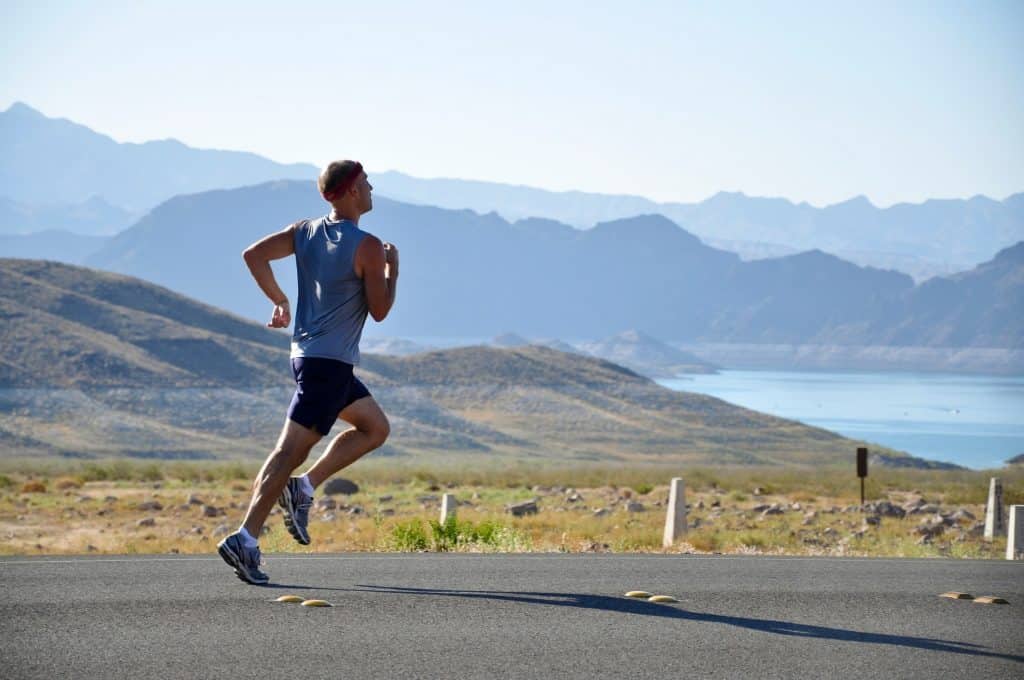
We do have this amazing capability, and it’s something that we have to develop. Most people have never learned how to breathe; it’s the first thing we do, right? It’s the first sign of life that we look for in a child when they’re born, and it’s the last thing that we do in this meat suit, so to speak. But in between, nobody’s taught us how to breathe. We don’t learn in school, and our parents didn’t teach it to us. And then we get into our 30s and 40s and 50s maybe and then we learn how to breathe, and we’d start doing it with this consciousness that Wim Hof and other people have created. And it’s so amazing what we can do. And you’re exactly right, metaphorically speaking, which helps increase the size of that bucket and increase that resilience.
Now one thing that does affect our stress, and this is something that is often overlooked is not our response to stress, but our actual reaction to a situation. So, if we think about the senses as they’re coming in, imagine a lion walked into my office right now, or into your office in your scenario, based on our beliefs, values, and experiences, we would create a response before we’re even aware that there’s a lion. And that’s a protective mechanism, I’d want that built-in mechanism for my body to be prepared to fight off the lion or the smart thing to do probably would be to try to run away from it. And immediately, the blood that’s normally going to my trunk starts going to my arms and legs for the preparation for me to do that. Now that turns off all of these healing systems in my body for me to survive the scenario that I’m in. Now, of course, as I mentioned, it’s based on my values, beliefs, and experiences. If my two-year-old son, he’s almost ten now, but let’s say he’s two, is next to me, he’s going to run towards the lion because of his beliefs and experiences, he’s going to think it’s a big furry cat. So it’s our conditioning, and what we’re conditioned and taught to fear, or based on our experiences that we’ve had that we create this initial kind of unconscious response to the situation.
Genetic testing can help us identify where our strengths are and where our potential threats may be.
So for a lot of people, what they’re doing is they’re getting better at putting out a fire, but what we want to do is go a layer deeper and figure out what’s starting to fire in the first place. What’s creating this underlying stressor for me, that’s causing me then to come up with coping mechanisms. Such things like yoga, meditation, Tai Chi, Qi Gong, people use these as fire extinguishers instead of using them as tools to build up their body. Does that make sense metaphorically? And so we’re using a lot of these things incorrectly, people are using yoga to handle stress, which is great, it can be a great stress relief. And if you do that for an hour a day, what about the other 23 hours of the day? We want to learn how to rewire and reprogram through different techniques, our subconscious mind so that we’re not constantly reacting, and we’re not constantly starting fires, and then putting these fires out. So the word for that is equanimity. How can I approach any situation and have equanimity in that situation, so it doesn’t rattle my nervous system? Because the moment my nervous system gets rattled, now something else is in control of my physiology. And if something else or someone else can control my physiology, then guess what they can control and hijack the function of every cell in my body. And that’s what’s happening to a lot of people right now is their nervous systems are being hijacked. And the function of every cell in their bodies is essentially hijacked because of the situation we’re all in. It’s really important that people go that layer deeper. And a lot of times that can be done through hypnotherapy, that’s one way to do it. Plant medicines are another way to do it, it’s a little bit more effort, it’s not short-term always, it’s a little bit more long-term work, but that I feel is very critical at helping people better manage their stress and better be in control of their nervous system and their physiology.
Yeah, because if they’re on high alert all the time, doing yoga at the end of the day or in the morning, still hijacks your nervous system the rest of the day.
Yeah, I mean, a simple analogy is I just tell people to go to the zoo. Not that I’m a huge fan of zoos and caged animals, but it’s worthwhile going to the zoo and just paying attention to what the animals are doing. What you’ll find is that most of the day, they’re doing nothing, right? They’re in a parasympathetic, relaxed, chilled out state where they’re hanging out with their fellow family members and tribe members. But most of the time they’re doing nothing. And if we watch documentaries, we’re kind of conditioned to think that the lions are constantly hunting, it’s always on the hunt, it’s always in that fight or flight state. And the reality is that most animals are in a parasympathetic dominant state, and that’s what allows them to heal. Because when we’re not in that relaxed parasympathetic state, we’re not healing and repairing.
The bridge between our sympathetic and our parasympathetic system is the breath.
Right. Now one thing I learned about breathing and just how to be efficient with your breathing is to breathe from the belly instead of from the chest because if we just use the chest for breathing, I think it’s a third of your lung capacity fills up, and if you fill your belly and push your belly out while you’re breathing in, then you’re filling all of the capacity, something like that.
Yeah, so we have a muscle called the diaphragm, and diaphragm translates to the horizon. So it’s the horizon between our lungs, and it separates the lower trunk organs like the stomach, and the digestive organs and everything sits below the diaphragm. And the diaphragm, when it contracts, it flattens out, and that allows for expansion in the lungs to take place. Many times people breathe through their secondary and tertiary breathing muscles. These are like your intercostal muscles and your shoulder muscles, that’s going to give us the last few percentages of our ability to fill our lungs, but most of that’s going to come from what we would call belly breathing. So really diaphragmatic breathing or belly breathing is the most efficient way for us to breathe. And then breathing through our intercostals and our shoulder muscles, that’s going to create a lot of tension in those muscles and overuse them and appropriately, and it’s not going to allow us to take that nice beautiful deep breath that keeps us in that parasympathetic state.
So the other thing too is the bridge between our sympathetic, which is our fight or flight system, and our parasympathetic system, which is our rest and digest and relax and reproduce the system. The bridge between those two is the breath. And this is why yoga and Tai Chi and Qi Gong and Wim Hof, and all of these methodologies are based on the breath because it’s using the breath that we can shift from a sympathetic stressed-out state into a parasympathetic state. And I don’t think they knew these thousands of years ago when these techniques were created, but now we have the technology to measure it and to identify it. And in the work that Wim Hof is doing that’s already been done, and he’s bringing a lot of attention to it, which I love. But a lot of people have been doing this for hundreds and hundreds, if not thousands of years, using the breath as a profound tool for healing to take place.
This is a great time for us to listen to our bodies. It's a great time to listen to Mother Earth and our community. If we can listen more than we speak, that help us create the world that we want. Share on XAnd so you’re into technology to monitor this stuff. So are you using a pulse oximeter to see how your oxygenation level is in your blood while you’re first kind of getting a new habit of belly breathing, or do you have your clients do this? I have one, I never had a pulse oximeter until the whole pandemic, and now this is the way or one of the ways to check ahead like before all the other symptoms occur. Your oxygenation level in your blood will dip, and then you get a fever and whatever. So that I’m just curious, how does the pulse oximeter play into your process?
Well, it doesn’t, so I haven’t been using one, and it’s on my list of things to order, so thanks for reminding me. The thing that I use, I do use technology, and I use an Oura Ring. So my wife and I both use that. So we check our sleep score in the mornings, and we check our HRV in the morning to make sure that we’re rested, and we’re recovered. This weekend was really busy for us, and normally we’d work out. We do a pretty intense Tabata type of training Monday, Wednesday, and Friday. And this morning, we both woke up and it’s set to rest, so we rested. And we took an extra hour and spent that in bed, and that was great because we had a busy day ahead of us. So it’s great to have tools to know when to push yourself and when to rest. Listening to your body, I think it is super important, and it’s overlooked. So our HRV was high, but our recovery was low because we went to bed late. It was Father’s Day, and we had a very action-packed weekend. And I love having tools like that to help me make better decisions with my body.
And for those listening who aren’t familiar with HRV, Heart Rate Variability, do you want to just quickly describe what that is?
It’s great to have tools to know when to push yourself and when to rest. Listening to your body is super important.
Absolutely. So HRV is heart rate variability, it’s the variability between each heartbeat. For example, your heart beats 60 times per minute, between each heartbeat, there’s a slight variation. And that variation has a lot of data and information in it because it can tell us the state of your nervous system. So if somebody is in fight or flight, then there’s going to be very little variation between their heartbeat. So it’s going to be a steady beat. Whereas if you’re relaxed and chilled, then there’s going to be a higher variability between each beat, so one beat might be .99 seconds, and the other beat might be 1.01 seconds. So that variability is important because it tells us the state of your nervous system. And so we want to see what we call a coherence pattern. And a coherence pattern occurs when your heart rate variability is high. And you can use breathing, you can use guided imagery, you can use music, you can use a specific sense. And these are things that can stimulate us to get into a more relaxed state. And by using our breathing and stimulating our senses correctly, we can get into a more coherent state, increasing our HRV, increasing our resilience, and training this.
So the Oura Ring, for example, is measuring my HRV while I’m sleeping. Something called the HeartMath is a little device that clips to my ear, and I can use it as a trainer. This means I can use guided imagery and music and certain sense and breathing techniques to then monitor and get neurofeedback from what’s happening in real-time in my body. And in fact, one of the things that we have people do is once they get into a high coherence state, when their breathing is working for them, their nervous system is nice and balanced, we’ll have them do some guided imagery of different projects and people and circumstances and things that they’re going to be working on or thinking about doing. And we can tell from their coherence level if they can stay incoherence, then we know that their heart feels good about that project. But if they immediately fall out of coherence and can’t get back in, then it’s kind of a way for us to identify, “Hey, maybe your heart’s not quite in this,” because you’re speaking to your heart, we measure the variability of your heartbeat. Maybe your heart isn’t quite in this, and you’re probably not going to do your best work because you’re going to be operating in an incoherent state.
So a lot of times, we’ll use this almost like a personal big Ouija board to let people know if they should or shouldn’t do something or if they should or should hire something. It’s kind of a deal-breaker in some cases. If somebody is an entrepreneur listening to this, we use it to help with pricing strategy. Because if somebody presents the price of their program where they’re offering and fall out of coherence, then immediately the energy gets sucked out of that room. And so you’ve got to feel good about your pricing, you’ve got to feel good about your offer, or your product, whatever it is, and be able to stay incoherence. So we’ll use this as a methodology to get people to understand what feels good to them so that they can maintain that electromagnetic field that the heart produces and stay in a state of coherence.
That’s cool. It reminds me of muscle testing, where you put your fingers together, your thumb and index finger, and so make it into a loop and run your other index finger through it, see if it goes through or not, that’s one way to muscle test. And another is to get a friend or family member to push on the end of your arm, or you’re holding it out, and you can do stuff like hold a piece of food or some medicine and see if your body thinks that it’s good for it or not. I’m just kind of describing muscle testing. That was a topic we covered in Christian Mickelsen‘s episode. So if you’re interested, definitely check that out, listeners. But do you do muscle testing at all? Or what are your thoughts on that?

Yeah, so it’s a great way to access the nervous system. And so the HRV is essentially accessing your nervous system. We can also do it through muscle testing, like a Duckbill test, similar to what you’re describing, but we would hold our fingers apart and then try to squeeze them together. And so if you fall weak based on the thought or the food or the supplements, sometimes people can hold onto the product, sometimes we might put it under their tongue or on their tongue, so they taste the product, so we’re getting it into the nervous system. And then immediately identifying if the body agrees with it or not. I took a 100-hour course in Applied Kinesiology and pretty fascinating stuff. So it’s a really fast and accurate way.
And now with functional medicine, what’s neat is we’ll get people who are muscle tested, and they’ll say, “My doctor said, I have this, this and this,” let’s test it, and we found it to be very highly accurate. So for some people, getting the lab testing done can cost hundreds or thousands of dollars, and then waiting on the results can cost weeks at a time. So if you can find somebody who is good at muscle testing that’s close to you, then this could be a great way to identify some underlying mechanism. And here’s the other thing, you can’t test everything, right? So running hundreds of different labs on somebody could be very cost-prohibitive, or even half a dozen labs could be cost-prohibitive. But muscle testing can be a very efficient way, and it could lead you in the right direction. Let’s just say somebody did want to get tested, at least you can narrow down what testing would be most appropriate based on the feedback you’re getting from the person’s nervous system.

Interesting. And you mentioned a phrase that is kind of an industry phrase, functional medicine. I’m curious what the layperson’s definition of that is because that doesn’t mean the same thing to everybody. So what would you say the kind of accepted definition is among the public, and what is the precise definition that the industry refers to it as?
The simplest way to describe functional medicine is that it’s personalized and root cause, which means that we take bio-individuality into consideration. We take environmental individuality, emotional individuality, spiritual, like there are relationships, all these things play a role in how the person is going to present into your office. And they also play a role in the strategy that you’re going to use to get them well again and feeling themselves again. And being optimized isn’t just about what shows up on your labs, right? It’s kind of what shows up here every day for you. “How do you feel?” “Are you happy or excited?” “Do you feel fulfilled?” “Do you have gratitude in your heart?” I mean, these are the things that I use as a metric for how my life is going or how my day is going is, “How do I feel today?” not necessarily, “I wonder what my testosterone level is right now.” So how we feel is super, super important, and one of the first things that we want to take into consideration, so functional medicine is identifying how this person functions and then also looking at the person’s chemistry. So we want to take their individuality into consideration, and then we also want to look at their biochemistry using functional laboratory testing.
A simple way to describe the difference between traditional lab testing and functional testing would be like the difference between looking at a picture of an engine and driving the car. Okay, so in our traditional allopathic model of medicine, which we need, which is great, there’s a lot of imaging and scanning and testing of that nature that’s taking place. So it can help us identify if there’s a tumor or if there is some sort of physical abnormality, but it doesn’t tell us about the function. And so functional lab testing, which complements kind of a personalized assessment and approach for the individual looks at the individual’s chemistry, and now we can understand what are the toxicities this person has, what are the deficiencies this person has, and what are the areas that we can further support them in. And so it’s root caused by personalized healthcare that takes the function of that person into consideration, because dysfunction oftentimes shows up long before the disease, and it’s almost impossible to have a disease without some sort of underlying dysfunction in the body.
One of my rules is that I like to feel better after talking to somebody, not worse. Share on XOkay, so let’s take an example, let’s say, insomnia. So what would be a potential root cause of insomnia?
Okay, so, unfortunately, that’s a very popular problem. We find that for most people, insomnia is caused by one of a few things. So there could be stress, right? Sometimes people have stress in their relationships, the financial stress that’s going on, and these are things that keep people up at night because when we raise cortisol, we decrease melatonin production. Another area that is often overlooked is lighting. So people are exposed to artificial lighting all day, so their brain thinks it’s the same time all day, kinda like being inside of a casino. And so, lighting plays a huge role. Another thing that plays a huge role is the lack of circadian rhythms. So because we’re indoors all the time, and we don’t have that exposure to natural sunlight, our circadian rhythm gets thrown off, so that could be another cause of insomnia.
Another cause of insomnia could be certain deficiencies. So to be deficient in magnesium, magnesium helps our body relax and helps our nervous system relax. That could be another cause. Other causes of insomnia could be blood sugar dysregulation. So if your blood sugar is swinging throughout the evening or while you’re in bed, then there could be times where you’re going to feel wired and tired. So you’re going to feel like you want to go to sleep or it’s time to go to sleep, I need to wind down, but you’re not going to be able to because your blood sugar is kind of all over the place. So those are just a handful of reasons why somebody could have insomnia. For some people, it could also be electronics, and some people are gonna be more sensitive than others. So avoid electronics in the bedroom, turning off your Wi-Fi at night. Those are some of the things that we would take into consideration.

And there are multiple reasons why you would want to avoid lots of electronics at night, besides the fact that it’s EMF exposure and blue light exposure. It’s also stressing you out because you probably see things like, “Oh my gosh, I have another thing I’ve got to do for tomorrow’s to-do list,” or “I just saw that something happened in some part of the world,” most news is negative. So it’s pretty easy to get into a negative frame, just checking things like CNN or Facebook, whatever, right before bed.
I feel like people are so divided these days, for whatever reason, it’s almost hard to say anything right. So social media, for me, is an area that can bring a lot of joy, but I can see how, for some people, it can also be a source of high stress and frustration. And sometimes you just have your feed kind of feeding through your brain. And that could be a big problem for a lot of people. So I would avoid checking your email, checking social media as much as you can. And some people are going to get more excited about things than others, and some people are going to get more emotional over things than others. One of the things that I’ve learned about myself is that I can look at something and not get emotionally charged. Of course, there’s some work done there, but then I also realized that genetically that’s one of my superpowers is that I can metabolize stressful events from a chemical perspective very quickly, whereas not everyone has that skill set or genetic capability. Some people might get completely wired from reading one post or one comment, and then they’re just stuck in this loop, and it’s hard for them to get out of That loop. So if that’s you, then pay careful attention to what your body’s trying to tell you and maybe avoid some of those things later in the day.
Okay, it’s all really good advice. Now, one of the three key pillars that you had talked about at the beginning of this episode was silence. And I’m curious, is there a particular technique or modality that you have discovered that just is amazing? You mentioned, for example, yoga and Tai Chi and guided visualization, that sort of stuff, is there something that has just been profound for you?
So the easiest thing that we can access that can create an immediate shift in our physiology and allows us to be silent at the same time is being in nature. So we call it whitespace or green space, how are we going to refer to it as. But creating space daily in your schedule, in fact, for me, it’s right after this interview, I’m going to spend some time outdoors. And not just spending time outdoors but being outdoors. People walk through nature, but being in nature, sitting still with it, and being observational, like really observing things. When you zoom in at a macro level, and pay attention to the textures, and the colors of leaves and bark, and bugs and all that stuff, it starts activating your right brain. So it allows you to be very creative, it unlocks your creativity, it allows you to be better at problem-solving. And oftentimes, just 5-10 minutes, being outdoors observing Mother Nature and all of its beauty is enough to unlock some of these creative pathways that we all have, but most of us are stuck in our left brain all the time. We’re stuck in our do, do, do brain, right? We’re stuck in our logical brain. And we kind of want to balance both of these sides of the brain out. So getting on that creative side by simply getting outside in nature and being silent. And nature is never really perfectly silent, right? There’s the rustling of the leaves, and the grass could be rustling, or birds could be chirping. So those sounds are very relaxing to our body, and so that’s one of my secret tools to accelerating healing is time in nature.
One thing that affects our stress is not our response to stress, but our actual reaction to a situation. Share on XDo you take your shoes and socks off and have your bare feet on the grass?
Yeah, so you want to be grounded. So we give bonus points for being connected to the earth. Ideally, you want to be bare feet. But getting outside and being quiet and being silent is a great starting point. And then we can always advance from there, and then you can take your shirt off too because exposing your body to sunlight is also very critical, not just your eyes, but your entire body if you can.
Right. Because then that Vitamin D gets created, you don’t have to just take the vitamins, you create it.
And this might be good for a different conversation, but your body becomes a battery when it’s exposed to sunlight. So there is this process that takes place in the lining of our blood vessels, and as blood is flowing through it, it’s creating a charge. And so you charge your body up when you’re in sunlight. So expose yourself and get sleeveless or get topless, if you can, whatever is appropriate for you. But getting that sunlight every day hitting the skin is super important. I just read a study the other day, my wife shared it with me, that exposing your skin or the areas of your body where you’re storing extra fat, exposing them to sunlight will mobilize the fat so you can just lay there and the sun can do a lot of that work for you. I would still suggest exercising, but I know a lot of people struggle with that, but getting outside and getting sunlight is an easy, very passive way to kill a lot of birds with one stone, so to speak.
Gotcha. That’s great stuff. So if somebody wanted to work with you, listeners thinking, “Wow, this would be transformational.” And how do they do that?
Well, the best thing for people to do is to go to our website, it’s www.30in30.org. And I’ve created a sequence of 30 emails that I sent and videos, and it gives you my 30 best tips. So I encourage people to start there first because if you hire me, these are the 30 things I’m going to tell you to do to get the best results working with me. And once you’ve done that, then there’s an opportunity for us to schedule a call to dive a little bit deeper to figure out, what are the things that you need to do in addition to the 30 things that I’ve asked you to do, so that you can further optimize your health. And all of these things are simple, they’re things that you’re already doing, but now you’re going to do them intentionally. We believe in the compound effect. So instead of doing one thing perfect, let’s do ten things 10% better, and we’ll get much better results.
That’s all good stuff. So thank you so much, Sachin, this was inspiring and powerful and full of wisdom.
